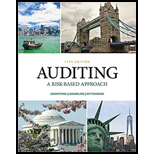
ToshIba, EY
(LO 1, 2, 3)
In 2015, the business press reported that Japan’s Toshiba Corp. over stated its operating profit by 151.8 billion yen ($1.22 billion) over several years through accounting irregularities involving top management. This overstatement represents approximately one-third of Toshiba’s pre-tax profits during the misstatement period. Toshiba had a corporate culture in which one could not go against the wishes of superiors. An investigation report noted that when top management presented ‘challenges’, division presidents, line managers and employees below them continually carried our inappropriate accounting practices to meet targets in line with the wishes of their superiors. Improper accounting included overstatements and booking profits early or pushing back the recording of losses or charges, and such steps often led to even higher targets being set for divisions in the following period.
The report said much of the improper accounting, stretching back to fiscal year 2008, was intentional and would have been difficult for auditors to detect. The audit firm during this misstatement period was EY (Ernst & Young ShinNihon) who incurred significant reputational damage after they were accused of failing to detect the misstatement and fined $17.4 million by Japanese regulators.
The investigation into Toshiba’s accounting practices was initially limited to its home country. However, in 2016 the U.S. Justice Department and the Securities and Exchange Commission began looking into the case since part of the alleged fraud involved a Toshiba unit based in the US (Westinghouse Electric Company).
a. Based on this limited information, does this case represent a business failure, an audit failure, or both?
b. Should auditors be held liable if their client’s business fails or if the financial statements contain a fraud that the auditors did not detect?
c. Under what law would the SEC be likely to pursue this case?
Trending nowThis is a popular solution!

Chapter 4 Solutions
AUDITING-TEXT (LOOSELEAF)
- On average, FurniStyle Ltd. is able to sell its inventory in 30 days. The firm takes 90 days on average to pay for its purchases. On the other hand, its average customer pays with a credit card, which allows the firm to collect its receivables in 6 days. What is the length of the operating cycle?arrow_forwardA stock sells for $20 per share. What is the book value of the company if the price-to-book value ratio is 1.6 and it has 120,000 shares of stock outstanding? Solve thisarrow_forwardWhat is the price earnings ratioarrow_forward
 Auditing: A Risk Based-Approach (MindTap Course L...AccountingISBN:9781337619455Author:Karla M Johnstone, Audrey A. Gramling, Larry E. RittenbergPublisher:Cengage Learning
Auditing: A Risk Based-Approach (MindTap Course L...AccountingISBN:9781337619455Author:Karla M Johnstone, Audrey A. Gramling, Larry E. RittenbergPublisher:Cengage Learning Financial Reporting, Financial Statement Analysis...FinanceISBN:9781285190907Author:James M. Wahlen, Stephen P. Baginski, Mark BradshawPublisher:Cengage Learning
Financial Reporting, Financial Statement Analysis...FinanceISBN:9781285190907Author:James M. Wahlen, Stephen P. Baginski, Mark BradshawPublisher:Cengage Learning





